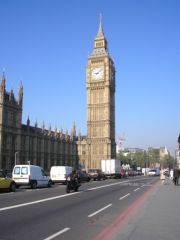PACTS comments: PACTS welcomes measures to improve the road environment for cyclists. Each measure should be carefully thought out and planned, especially where unintended consequences could be risky. For example, it is possible to envisage a situation where bike traffic lights in the line of drivers’ sight cause a driver glancing up to mistakenly move off early. Therefore bike traffic lights should be carefully positioned.
| Fatality | Serious injury | |
|
2007 |
0 |
0 |
|
2008 |
0 |
2 |
|
2009 |
0 |
0 |
|
2010 |
2 |
4 |
|
2011 |
0 |
1 |
| Slight injury | |
|
2007 |
29 |
|
2008 |
54 |
|
2009 |
75 |
|
2010 |
47 |
|
2011 |
46 |
| Number/percentage | |
|
Number Module 1 practical tests conducted |
(1)201,901 |
|
Total incidents |
750 |
|
Percentage of total tests conducted |
0.37 |
|
RIDDOR reportable incidents |
134 |
|
Percentage of total tests conducted |
0.06 |
|
Medical attention or first aid required |
73 |
|
Percentage of total tests conducted |
0.03 |

